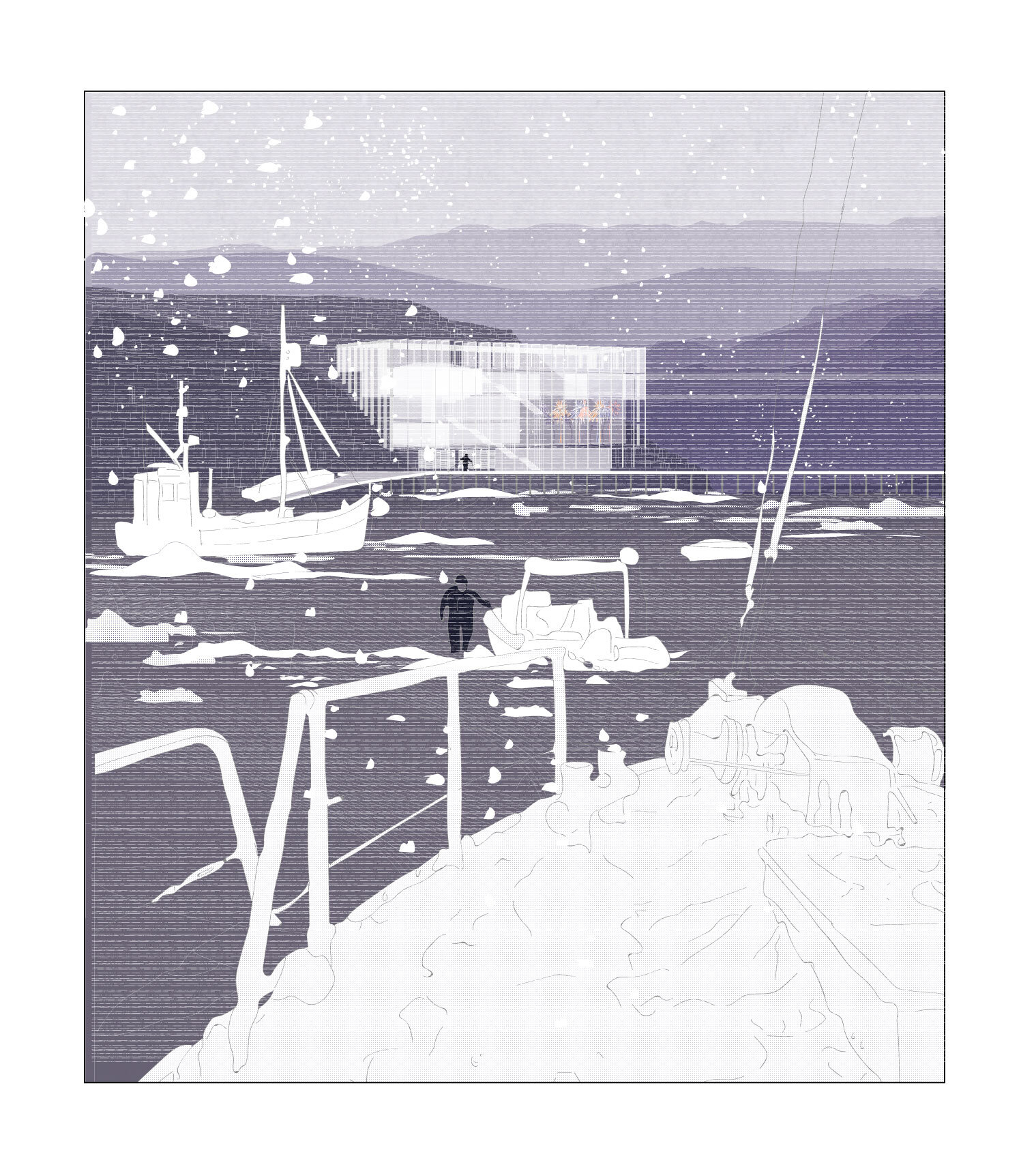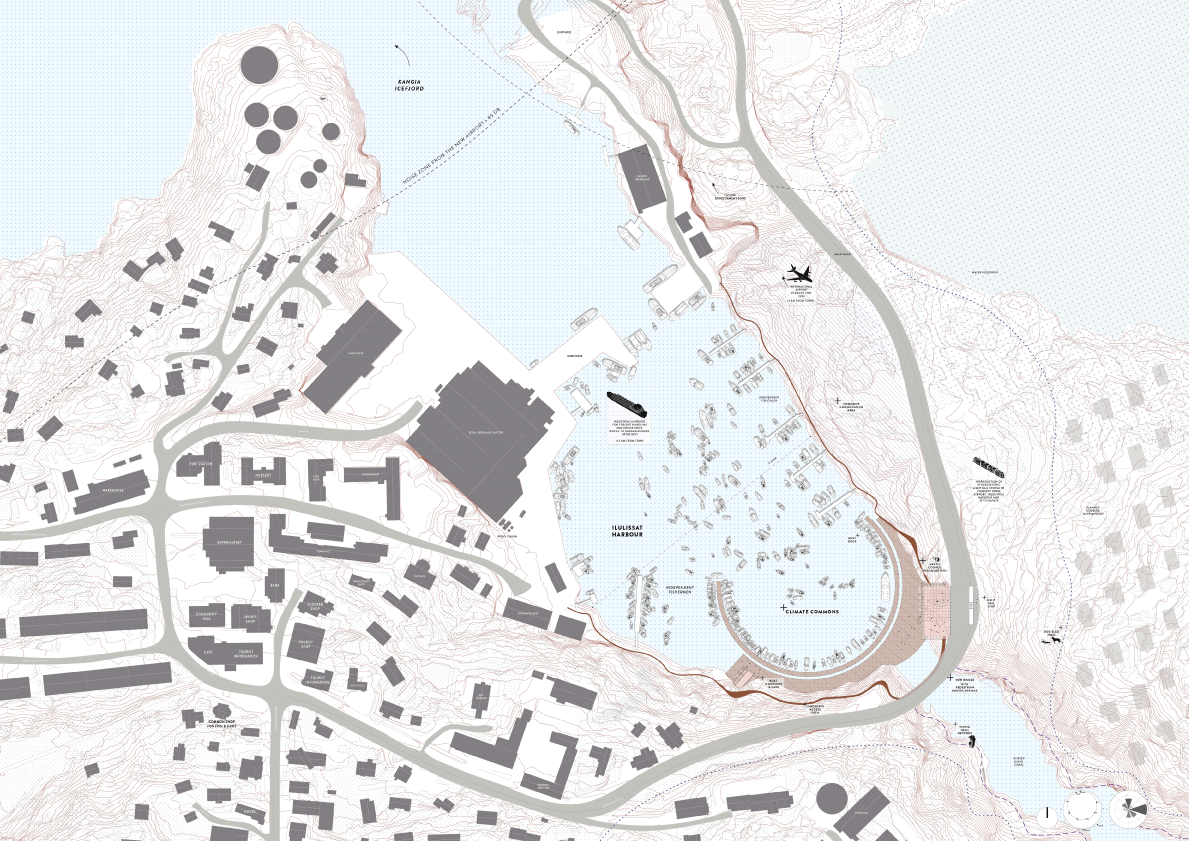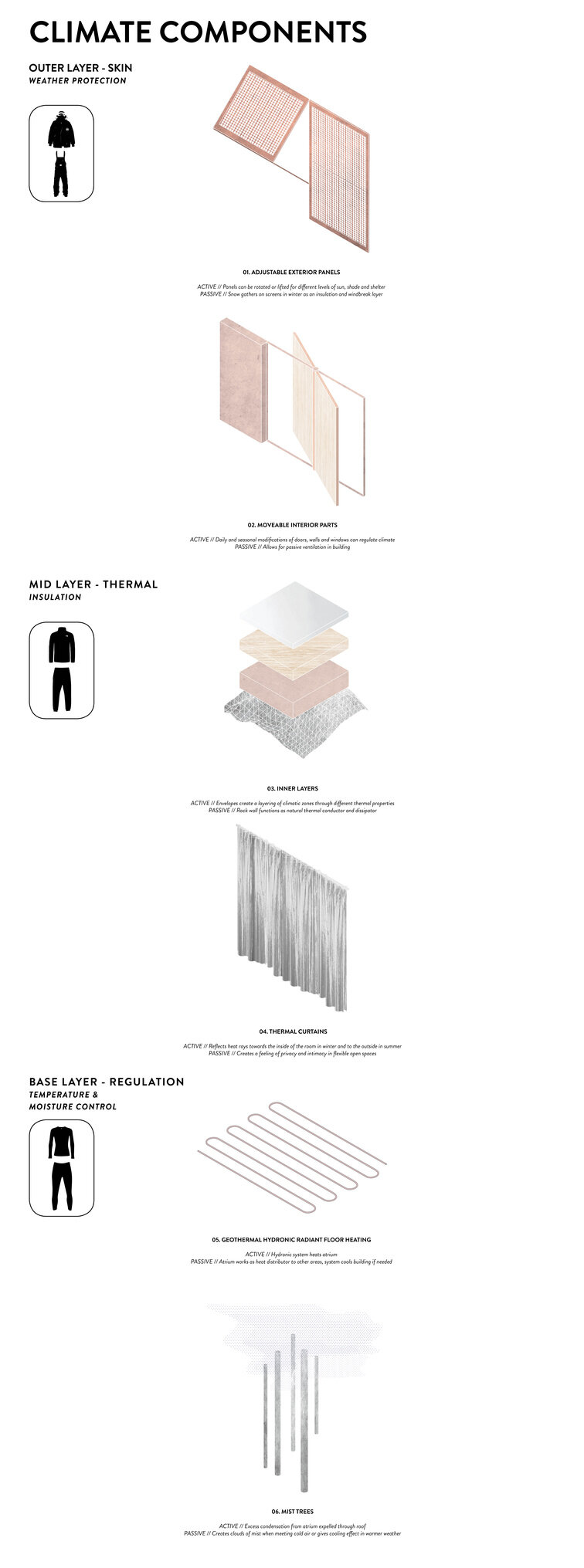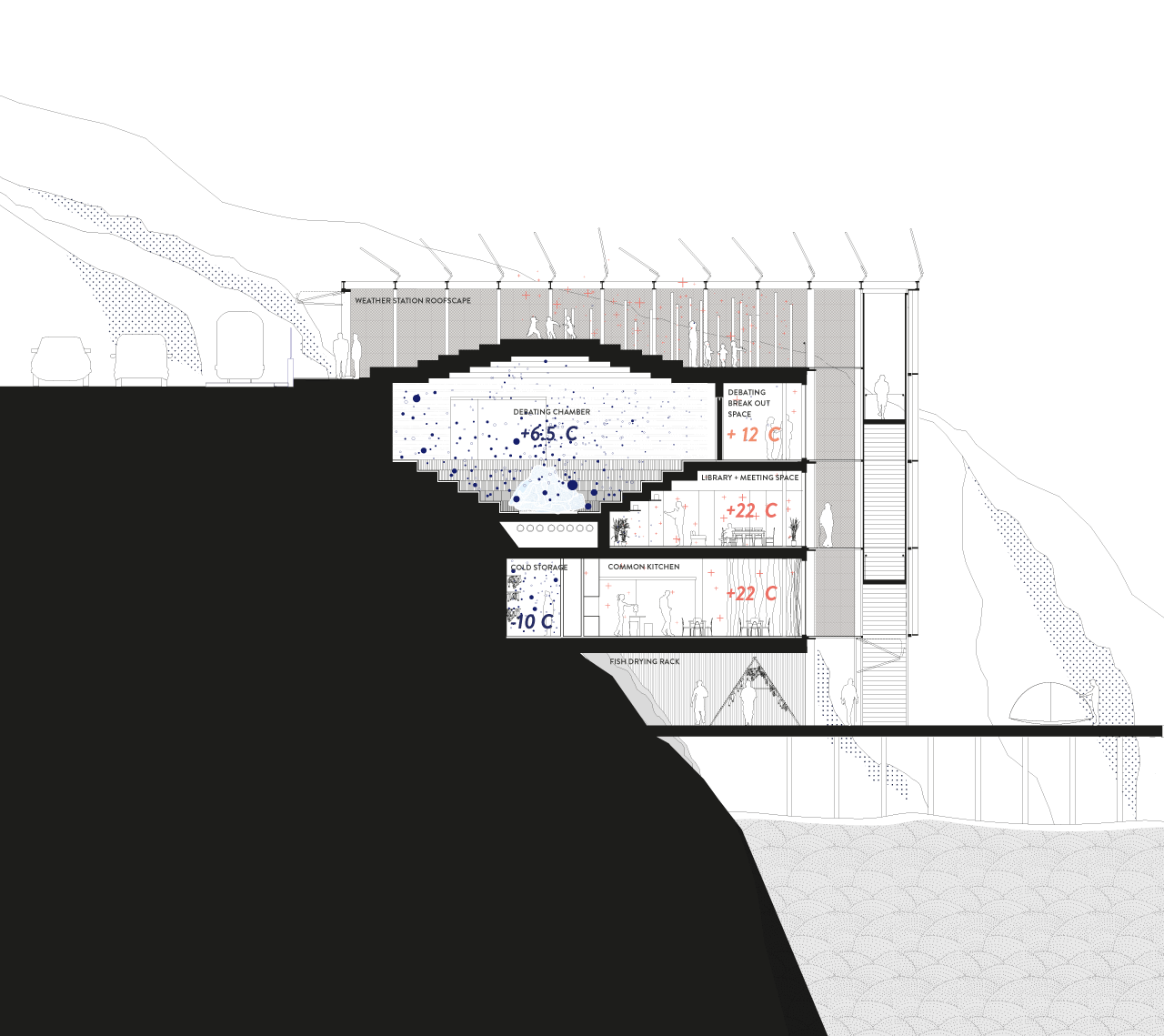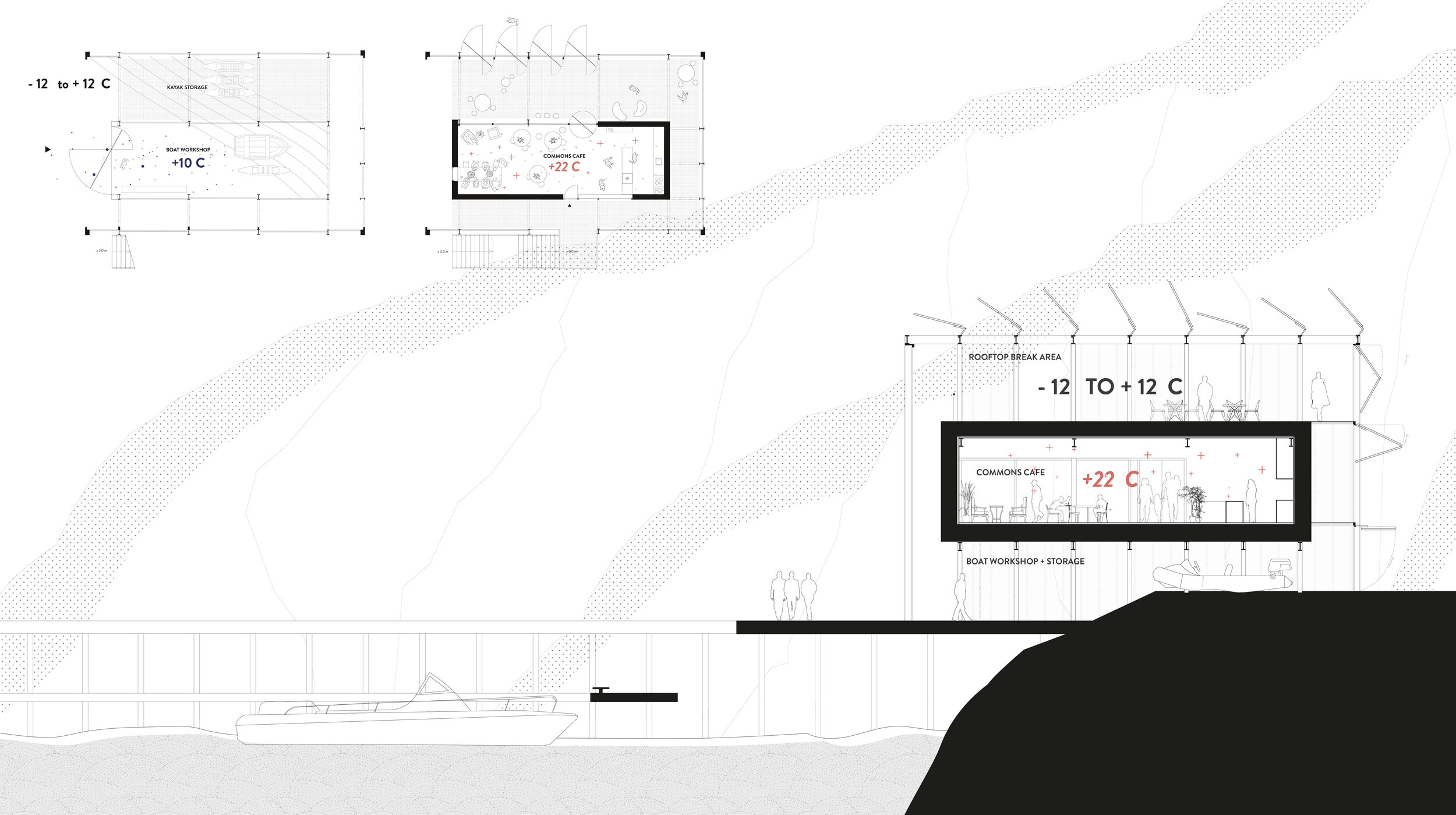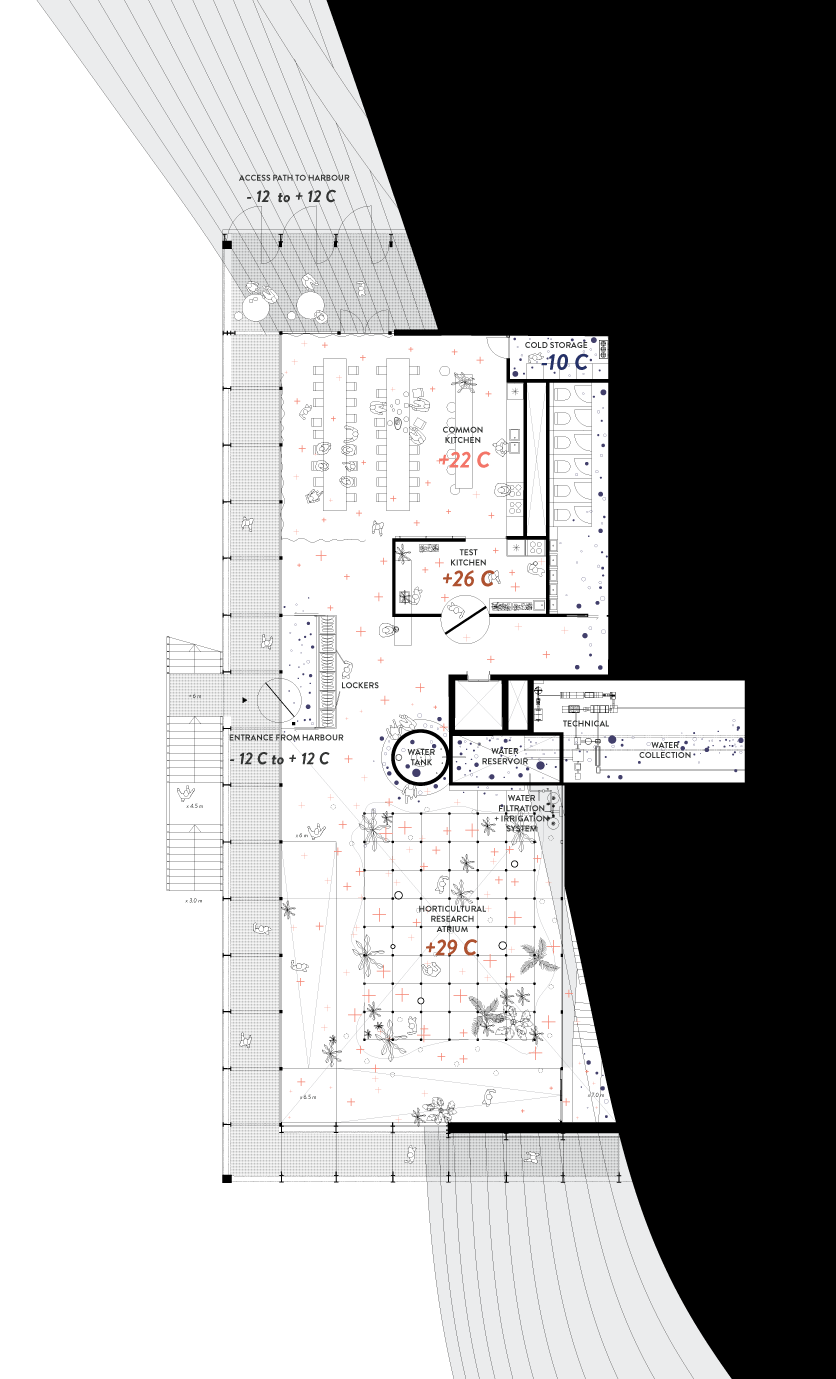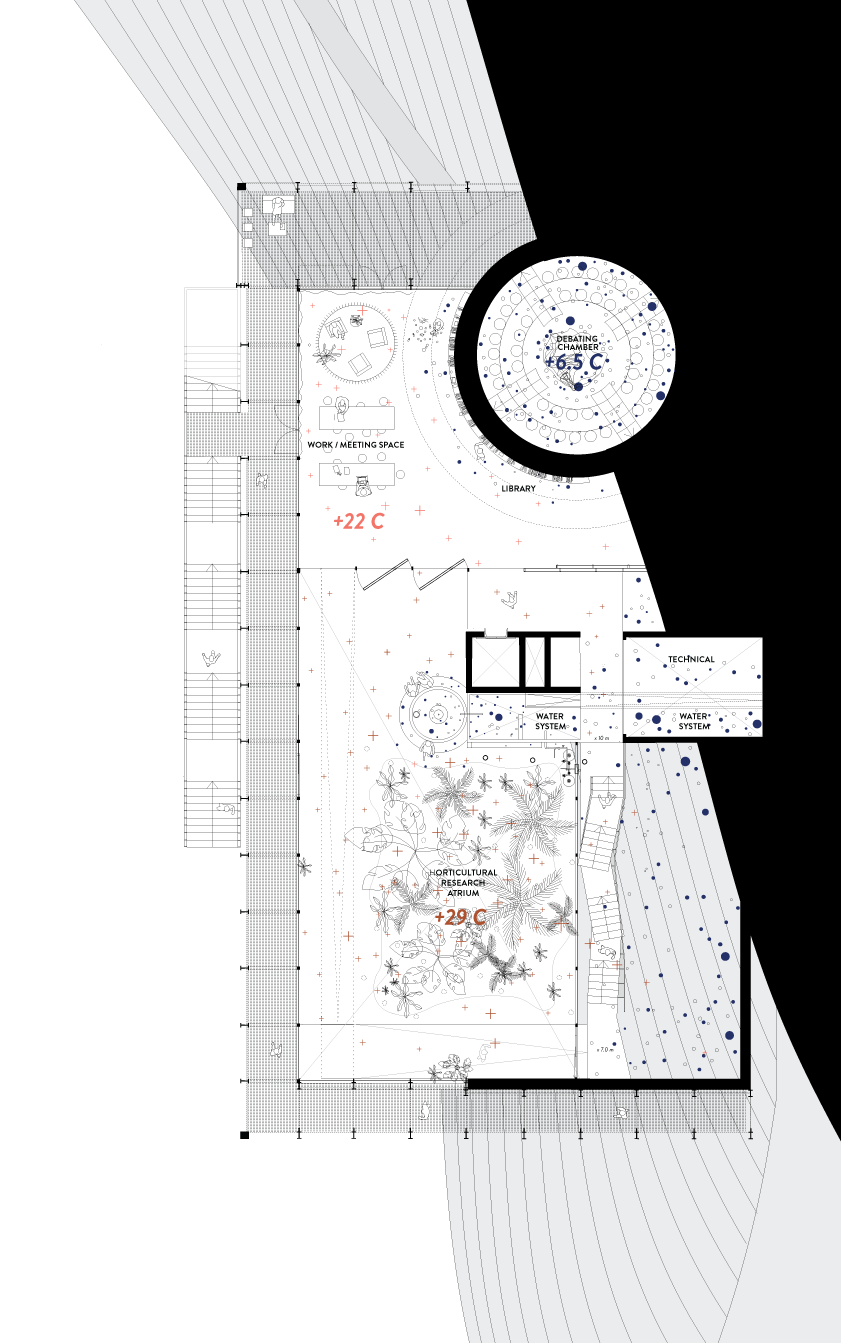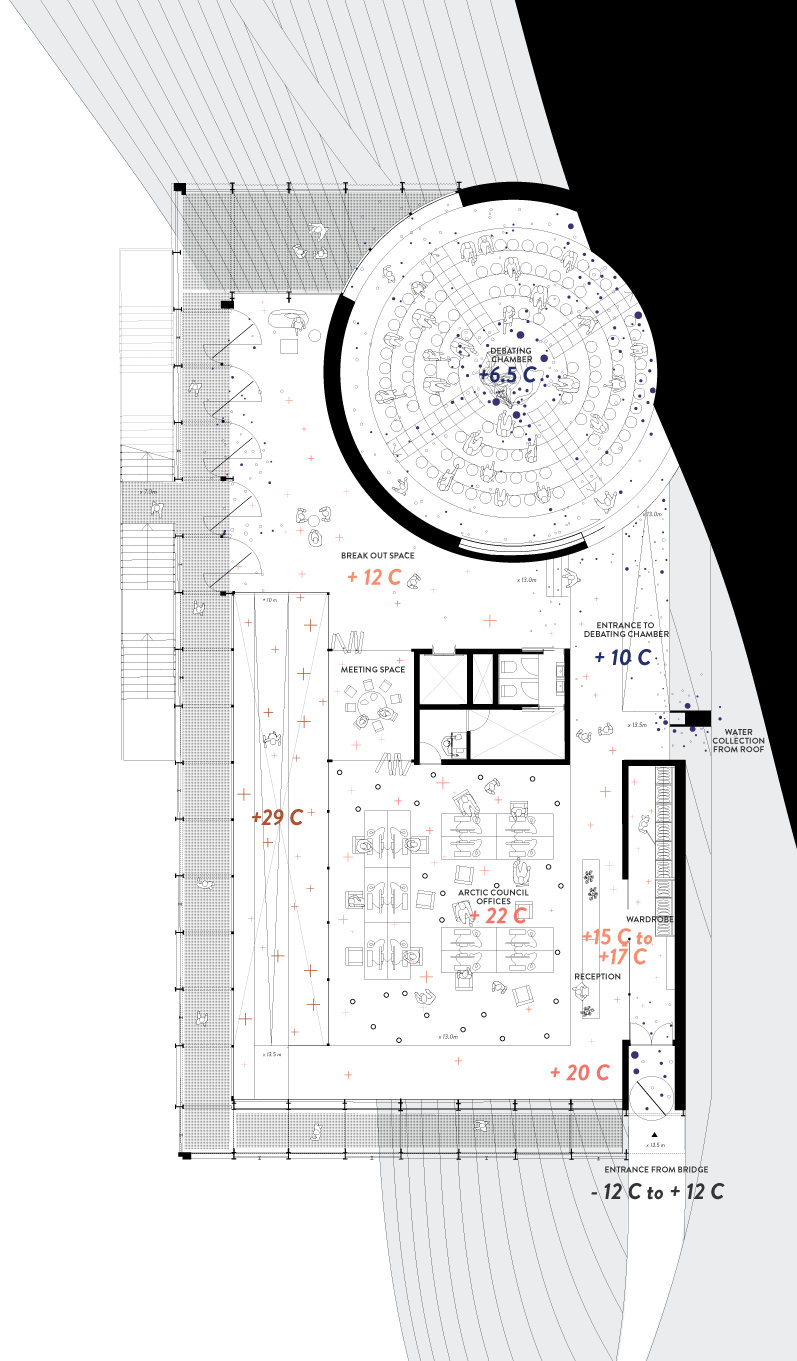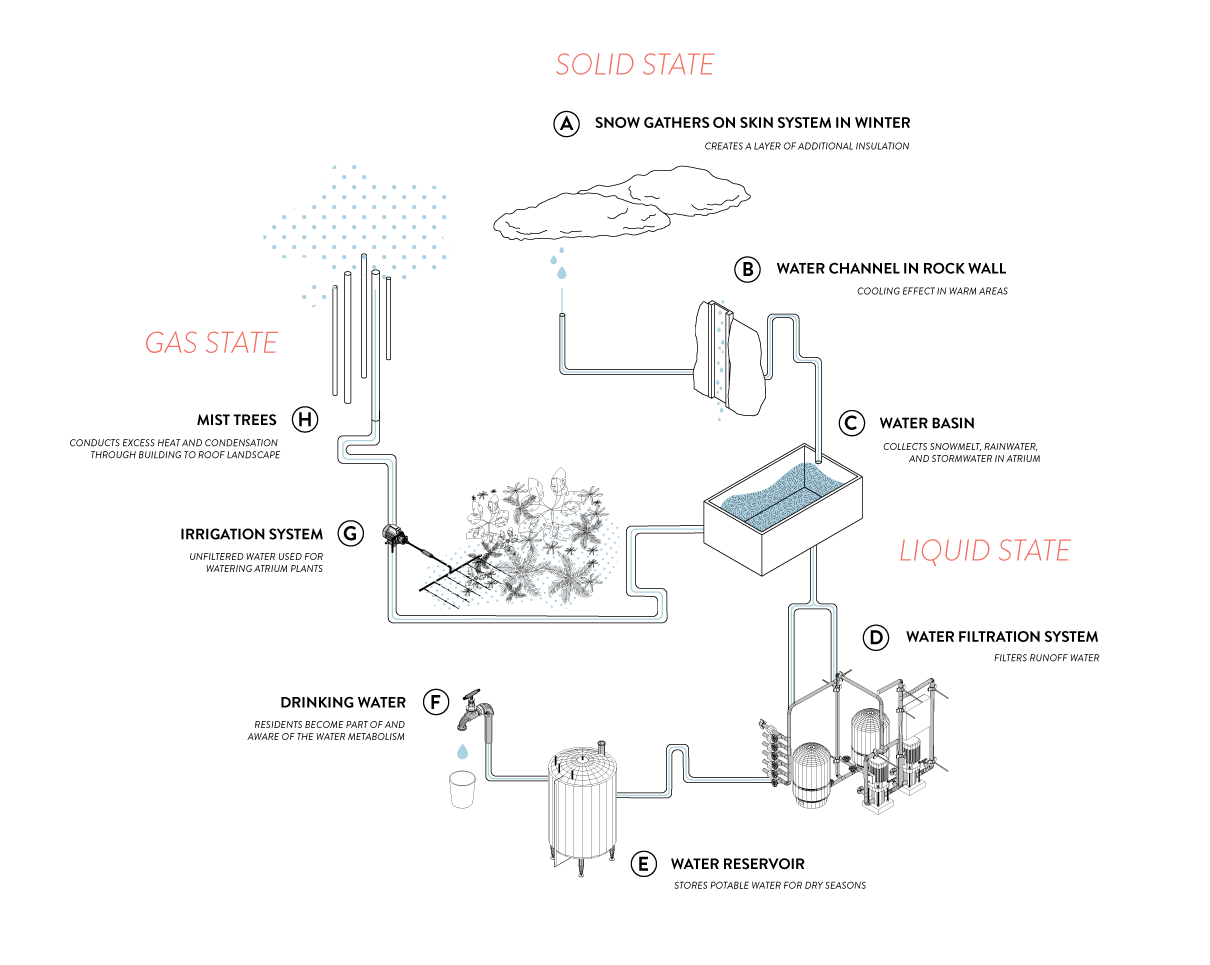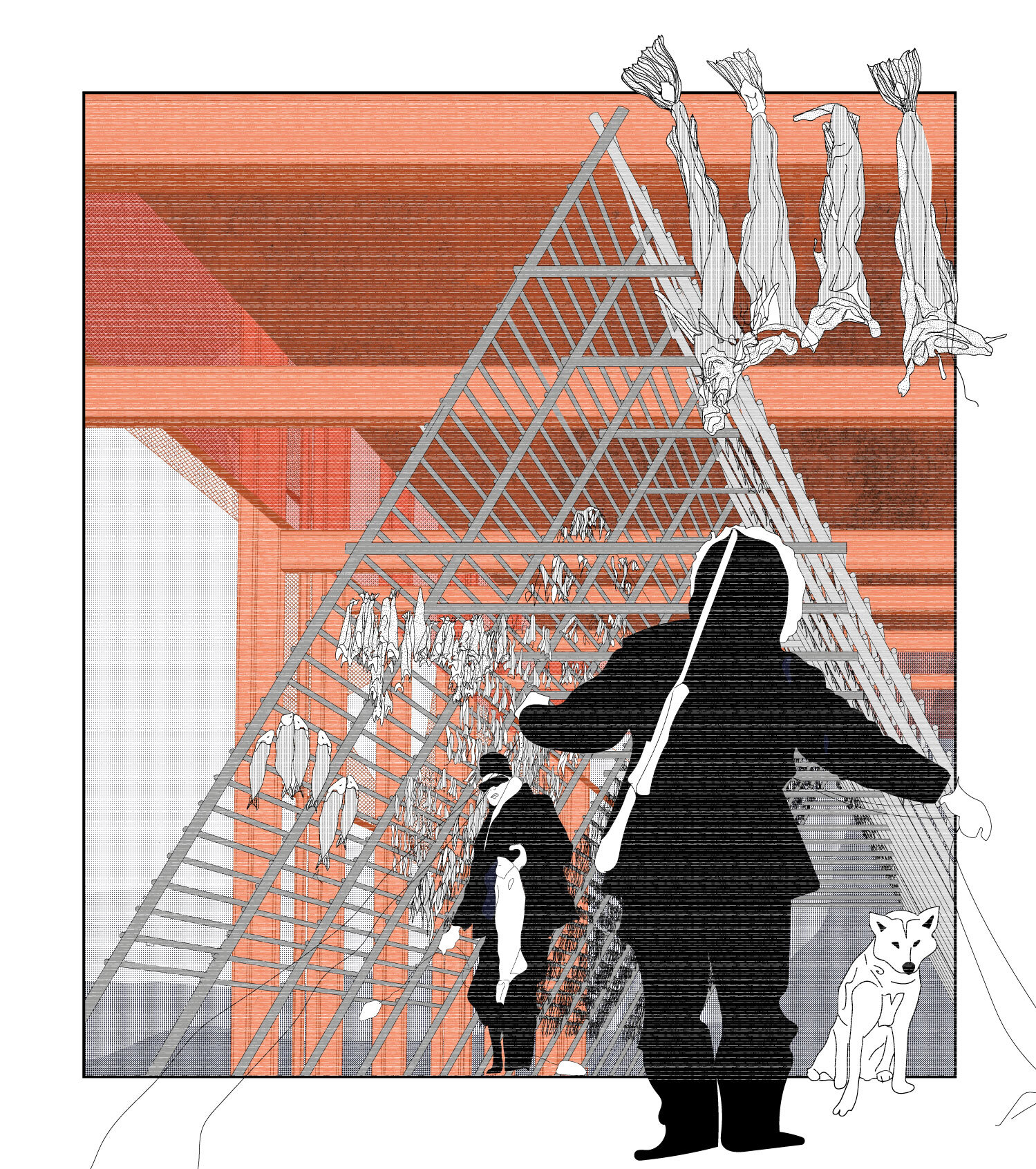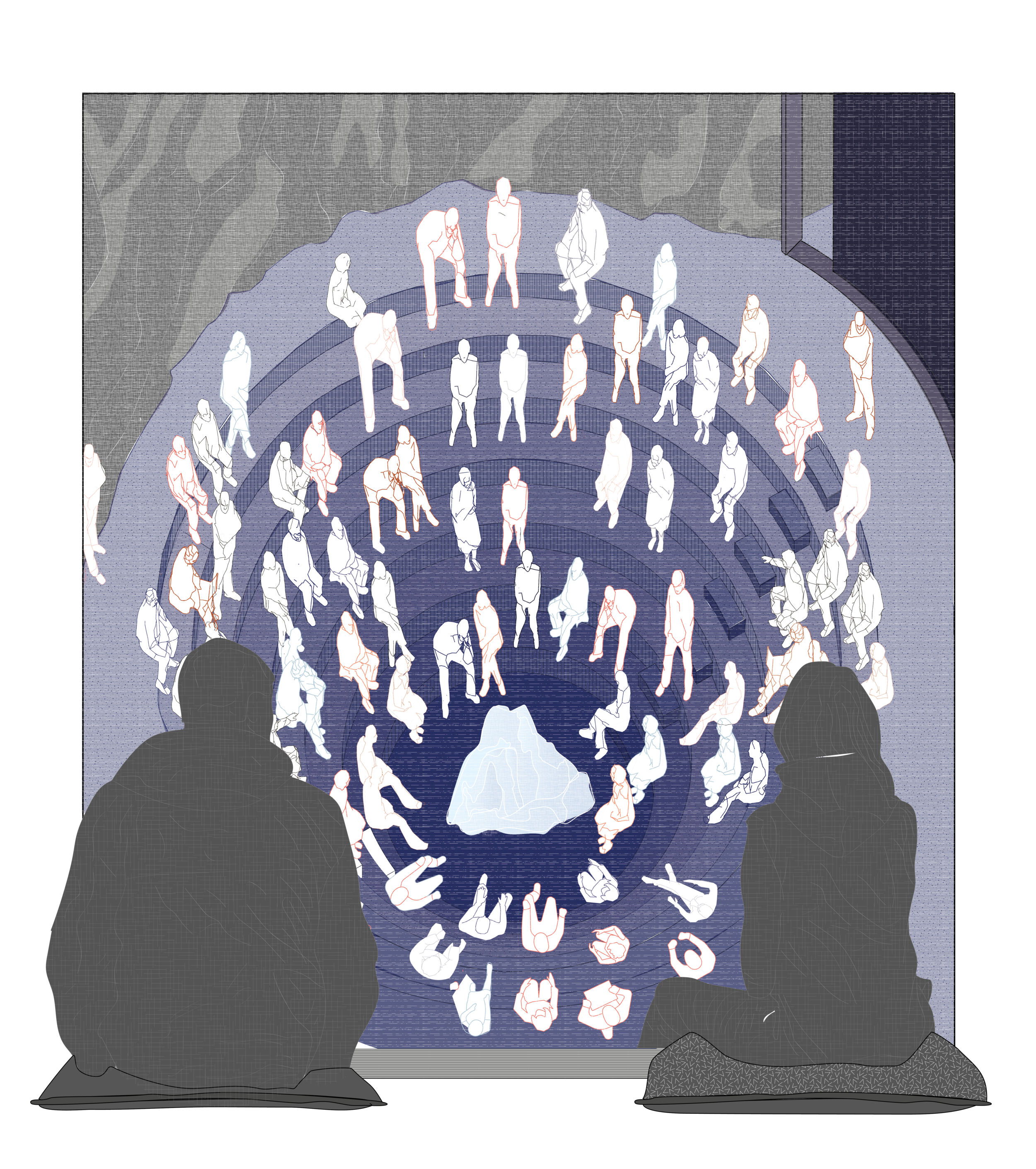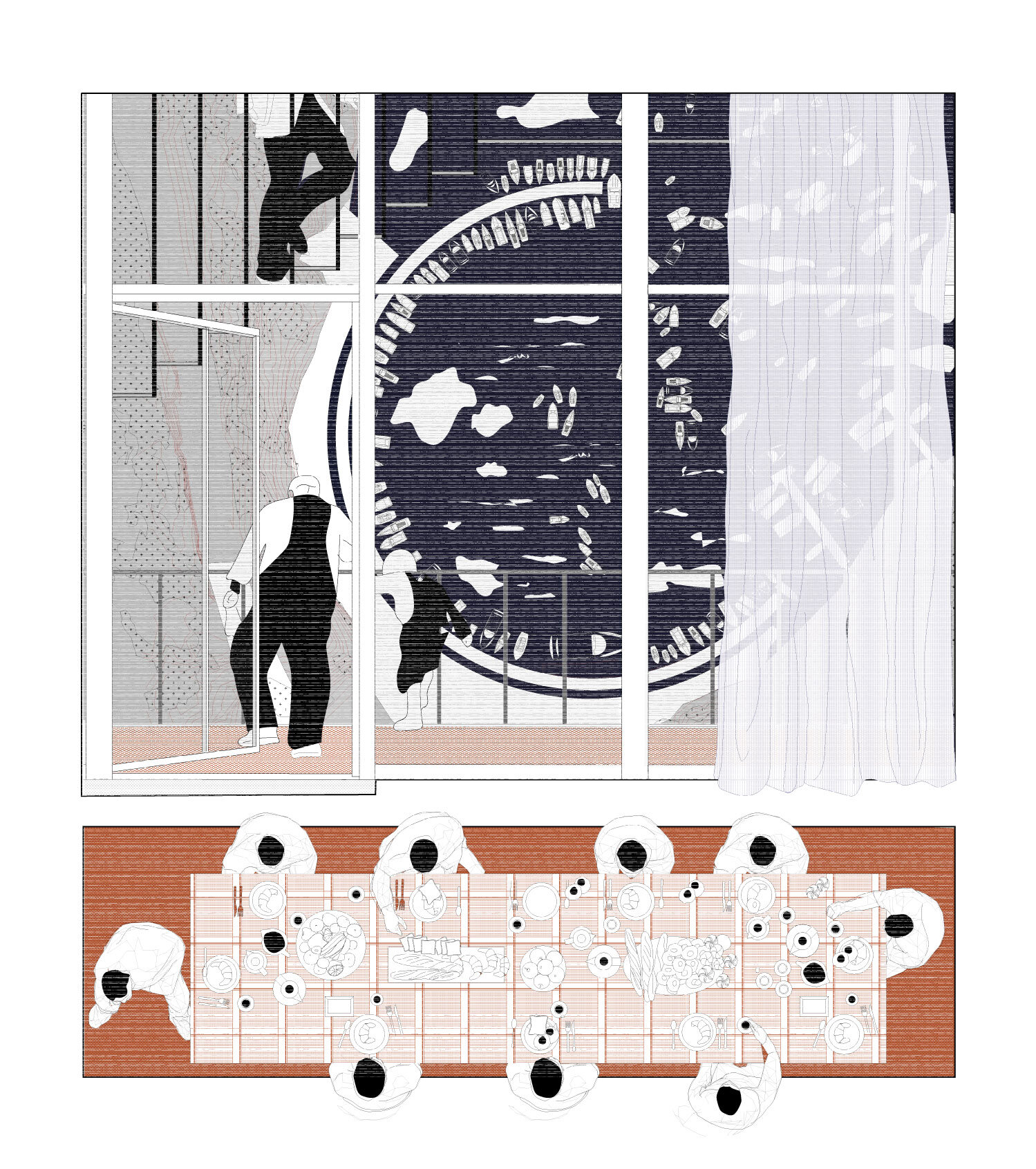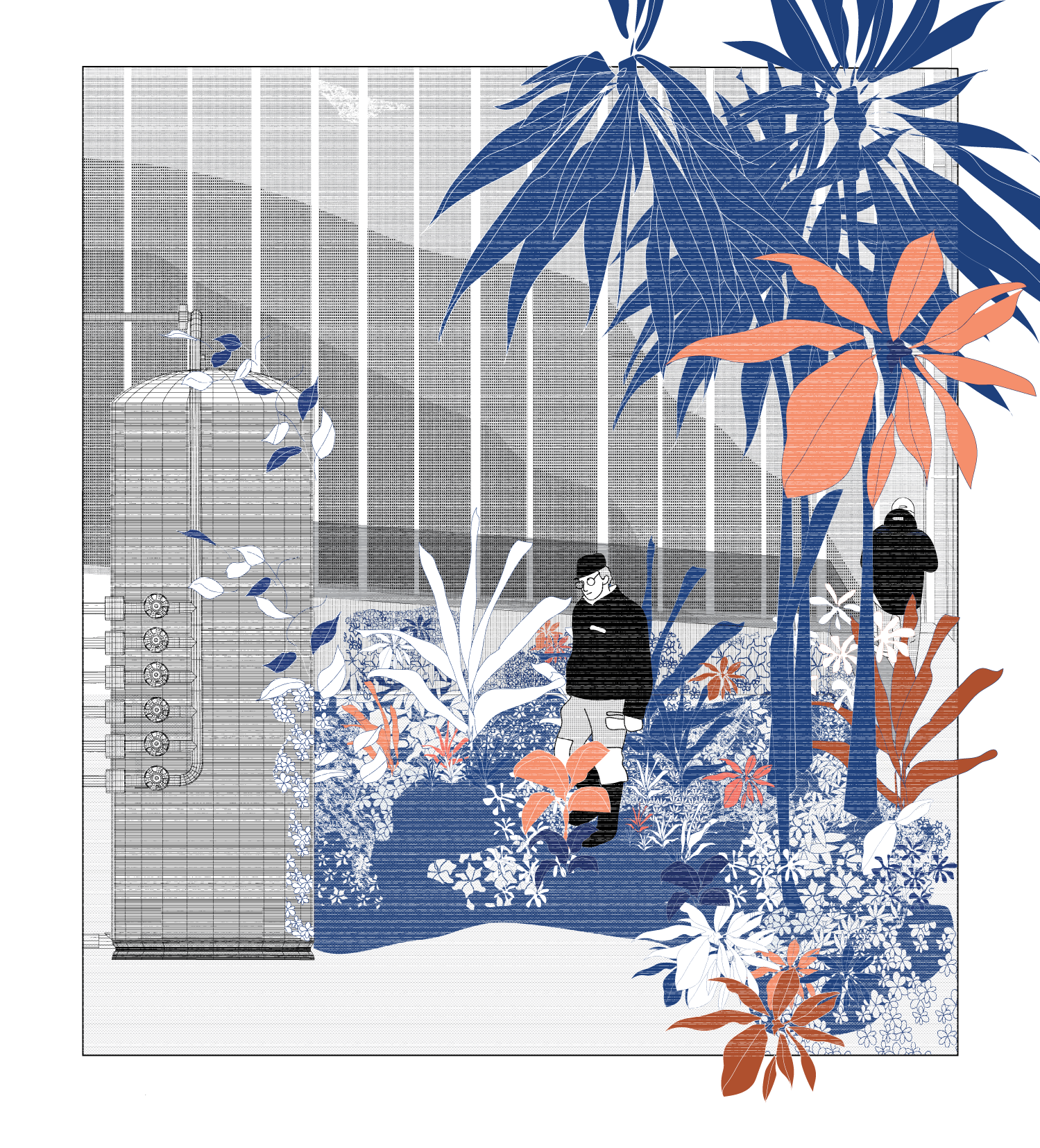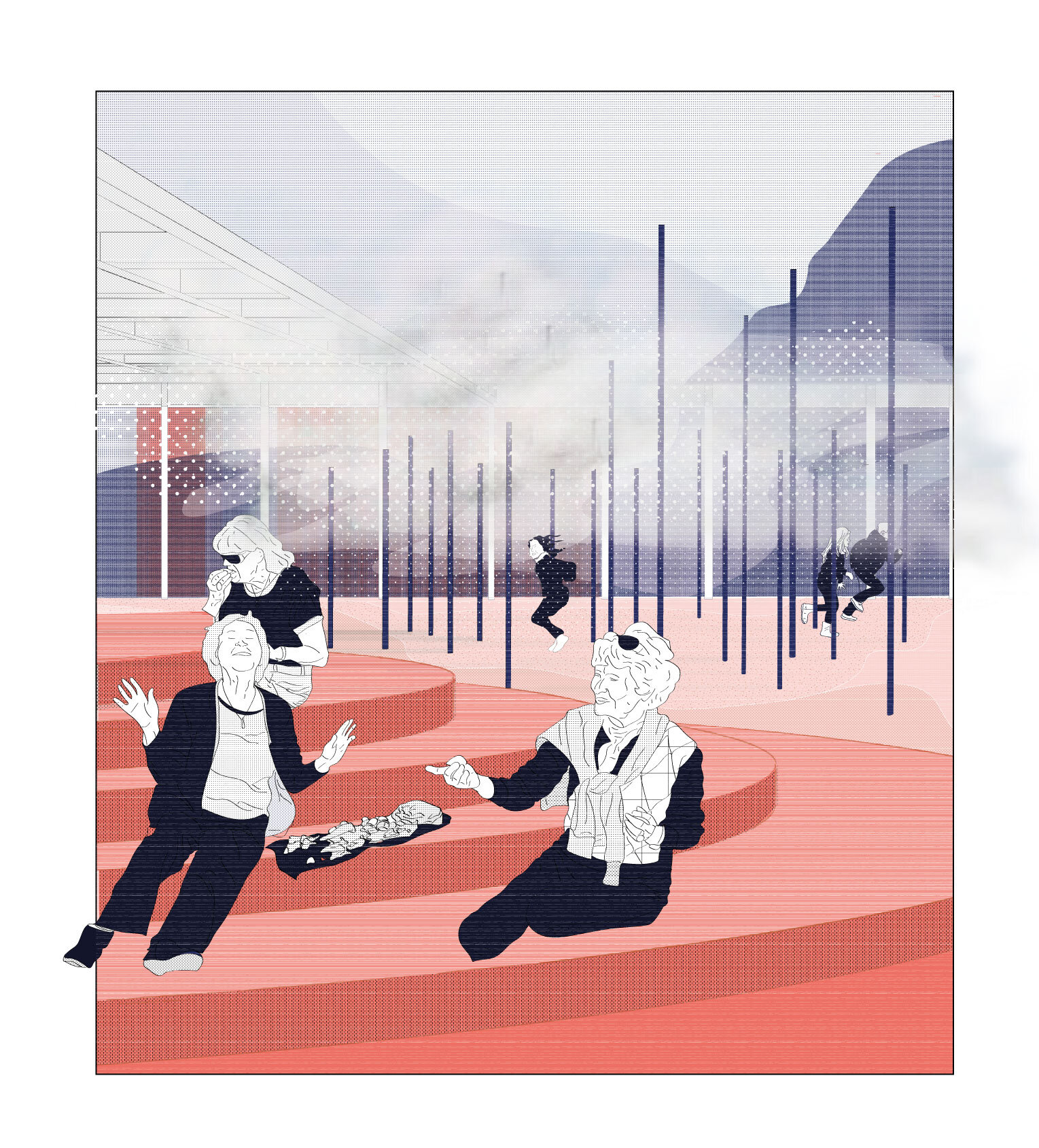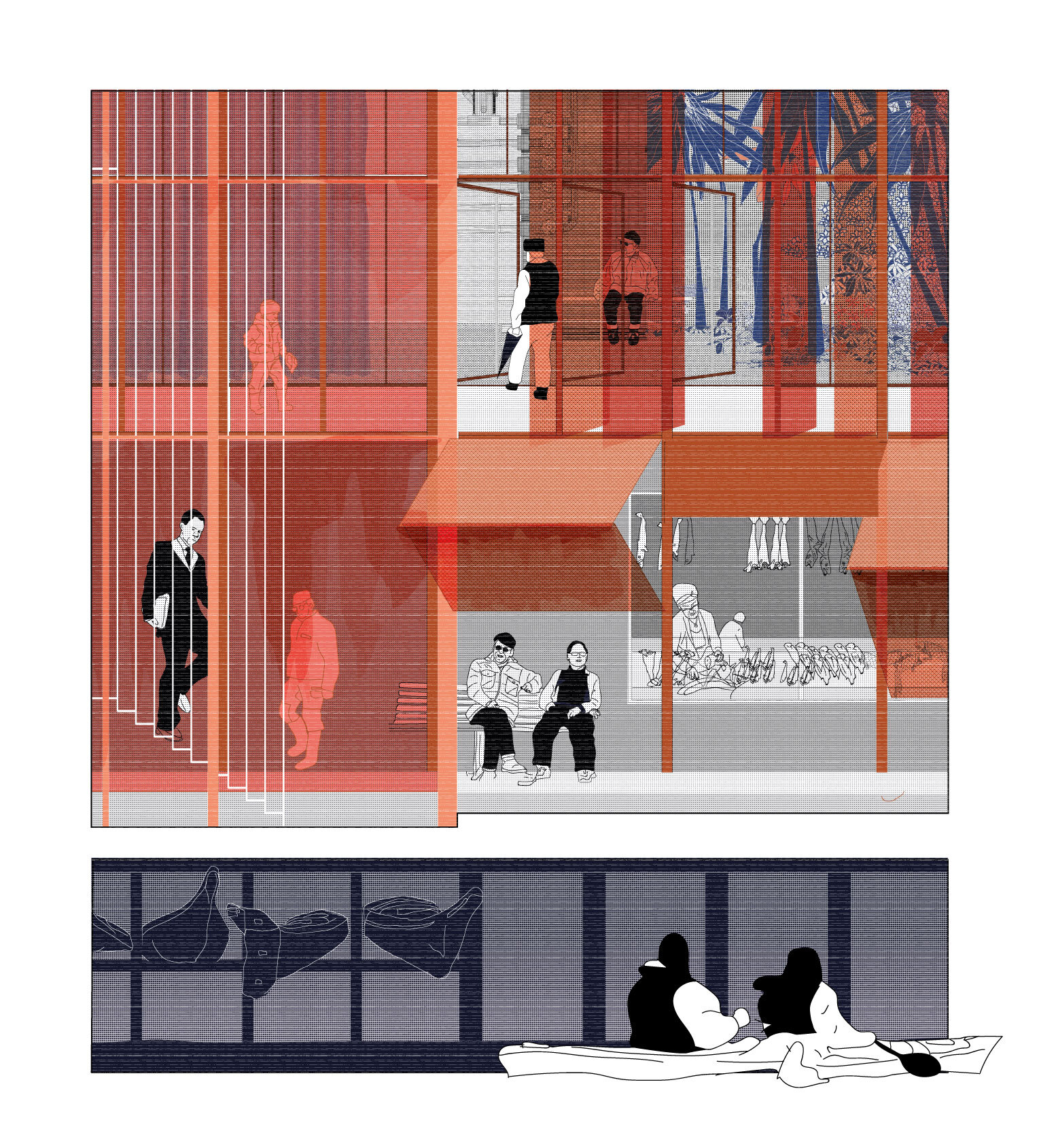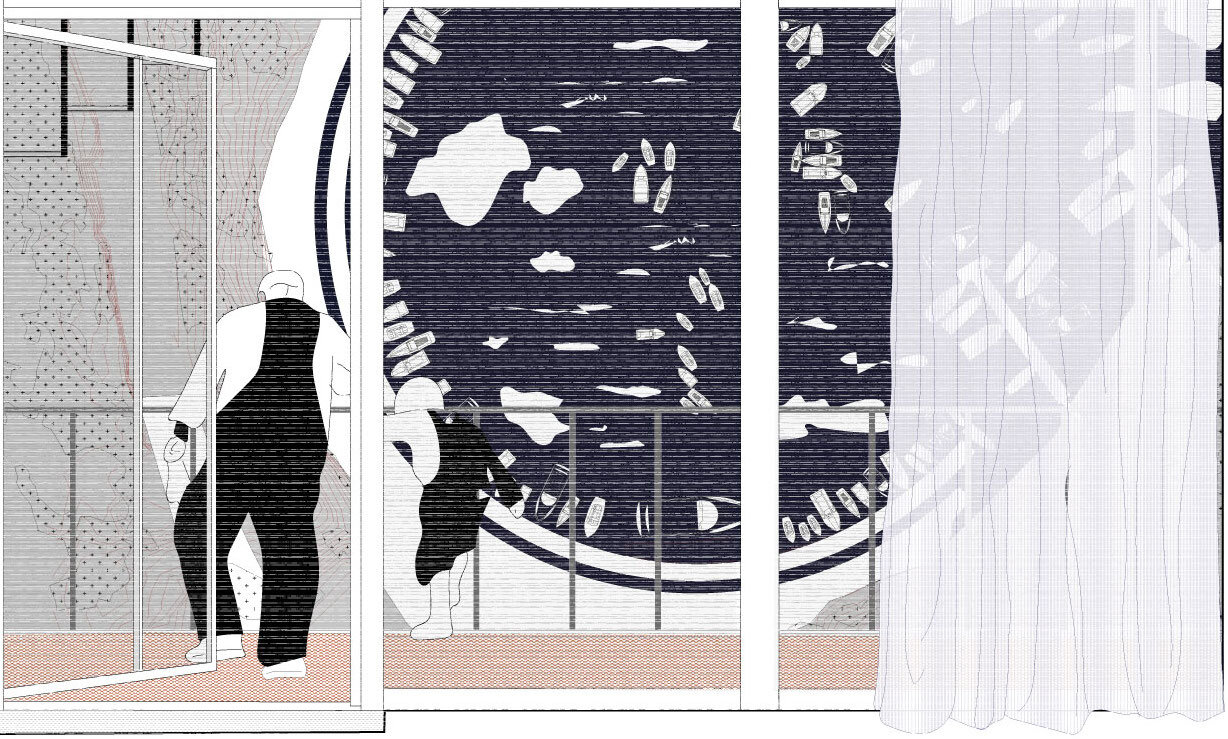
SHIFTING STATES
Research project / Ilulissat, Greenland / Spring 2019
Climate action is needed more urgently than ever before. This intervention seeks to foster the development of regional political frameworks and necessary social infrastructure to support an increasingly vulnerable Arctic. The dual program consists of a headquarters for the Arctic Council and overlapping common spaces for the local fishermen and town community. As political institutions are typically closed off to the public, and only accessible to those wielding power, we wanted to explore how opening the headquarters and promoting transparency and interaction with a directly involved population would affect both policy making and individual political engagement. Can architecture convey the sensory impacts of climate change on a more human scale and thereby shift our collective perspective towards advocating for planetary change?
We see architecture as transforming the climate on many levels - at the conscious local level of interior comfortability and also the unconscious global level as the building sector makes up nearly 40% of total CO2 emissions. In extreme climates, weather often produces a hermetic architecture that encloses the interior to account for the extremes. With the role of sustainable architecture coming more into question, and as climates become more dynamic, a new relationship could be explored between architecture, policy and climate that encourages buildings to exploit the transformative aspects of the atmosphere. Buildings in the past have been designed for a life span under stable climate conditions. Now we can see that architecture calls for a new understanding where multiple climate zones and trajectories could be imagined in a hybrid of building, landscape and infrastructure. We took inspiration from the way one dresses in Greenland. Layering is vital to stay warm. And then when it’s too warm, a layer is taken off. Could a building function in this same way?

